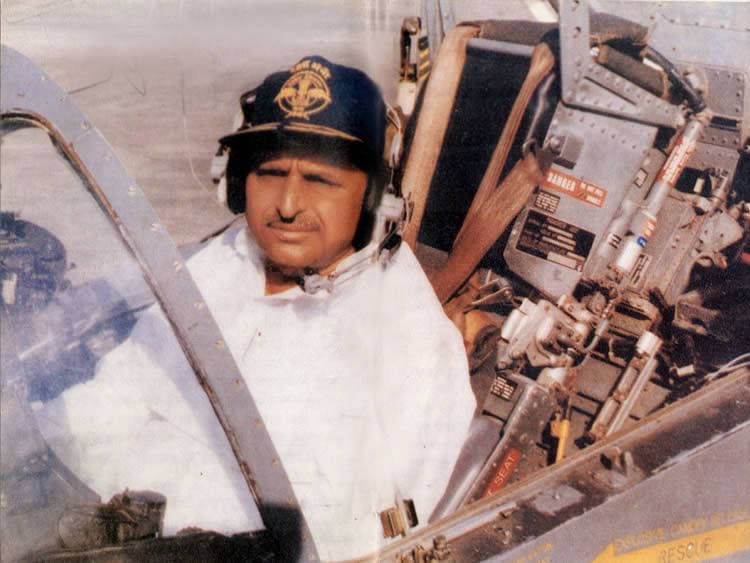[ad_1]
Mulayam Singh Yadav (Nov. 22, 1939-Oct. 10, 2022) was a simple man. He had a taste of the good life when he was defence minister (1996-98), and after, but was more comfortable riding rickshaws down the streets of Lucknow carrying a large black umbrella when he was the leader of the opposition through the 1980s. He was a grassroots man, and his continued victories, often from several constituencies at a time, even till the 2019 Lok Sabha elections, is just one measure of his continued touch with his people despite failing health and semi-retirement over the last decade.
Yadav began as a socialist but, along with HD Deve Gowda, was the last of those who drew real power from the political emergence of their caste based on that caste becoming the leading owner of land, and of that other marker of wealth in a largely agrarian economy—cattle. Jats had done much better than Yadavs in the UP of the ’60s in this regard. But Jats had numerical strength only in the Saharanpur to Agra belt of UP. So, Charan Singh welded a backward caste phalanx, including emergent Yadavs and Kurmis. But the logic of numbers and continued upward mobility allowed Yadavs to emerge as flag-bearers of backward caste political mobilisation by the ’80s.
The economic reforms of the early ’90s undermined the trend of successive caste-based communities gaining political strength based on agrarian wealth. Struggling to navigate the turbulent political flux of that decade, Yadav trusted the initially unctuous Amar Singh, who rode his coattails to become New Delhi’s ultimate …what’s the word, intermediary? The redoubtable Singh introduced Yadav to tycoons, stars like the Bachchans, and sought to add his kinsmen, Thakurs, to the party’s Yadav-dominated political base.
Mulayam Singh Yadav sometimes sought to yoke his base with Mayawati’s Scheduled Caste base (notably in ’93), and at other times clashed rudely with her rejigged SC-Brahmin appeal. But neither Yadav nor Mayawati (nor even the slightly more cosmopolitan Amar Singh) was able to conjure, or even perhaps imagine, an urbanist alternative that might spark the imagination of emergent India. To call them Modern might offend many, but the Aam Aadmi Party and, to a large extent, various variations on the Jana Sangh can perhaps be called urbanist alternatives. (Yes, the typical Punjabi village is urban in culture and aspirations far more than many villages in central India.)
Yadav gradually came to instinctively understand that he belonged to the waning side of history. He was shocked into depression for several days after his ringing chief ministerial announcement in October 1990 came a cropper. He had said that not a bird would flutter a wing near the Babri mosque, not realising how ubiquitously the network that brought kar sevaks to Ayodhya controlled the administration, the police, et al that was meant to take orders from him. That was more than two years before the mosque was brought down, but the future had already been written. Yadav did not order the firing in which six kar sevaks (not the inflated numbers the news agency put out) were killed. But he faced a Catch-22: either own the firing and lose some support among Hindus, or totally lose Muslim support. The journey towards relentlessly polarised political positions had begun.
Yadav had a feel for the pulse of the common people of this country. In a long interview during a drive in the back seat of an Ambassador from Ballia to Benaras during the heated 1993 post-demolition ‘Mandal-kamandal’ assembly elections, he turned to this unconvinced reporter and said emphatically: ‘aap chahein toh result ke baad hee chhapein, par likh leejiye: hum jeetenge. Iss desh ke log maarne wale ka saath nahi, maar khane wale ka saath dete hain.’ (Publish it later if you like, but you can take it for granted that we will win. This country’s people don’t back the tough guy, but the one who is beaten.) He did indeed win, but that was 29 years ago. An age has gone by since. That trend, even at the grassroots, is passe.
Yadav’s own politics was marked by inclusion and dialogue with even some of his putative opponents. He had a good equation with Prime Minister Vajpayee, kept Prime Minister Modi in good humour, and even reached out to his one-time political bete noire and successor as UP chief minister (in 1991), Kalyan Singh. Perhaps his decision to hand the reins of his legacy to his son, Akhilesh, when he won a putative fourth term as chief minister of UP a decade ago, was spurred in part by a still unerring sense of the lay of the land. Polarisation has grown apace since. It’s not the sort of politics in which a one-time socialist builder of coalitions would have been at home.
[ad_2]
Image and article originally from www.bqprime.com. Read the original article here.

